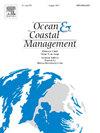Technology evolution in maritime autonomous systems: A patent-based analysis
IF 4.8
2区 环境科学与生态学
Q1 OCEANOGRAPHY
引用次数: 0
Abstract
Technology evolution in maritime autonomous systems is moving rapidly, yet the understanding of how different technologies integrate and mature remains limited. This study maps the technological landscape through patent analysis of 5987 patents from 2010 to 2024. The framework combines the following: a) bibliometric analysis, (b) Latent Dirichlet Allocation (LDA) topic modelling for the identification of key topics, c) topic-topic network analysis examining knowledge flows, and d) technology lifecycle analysis and forecasting using comparative growth curve modelling (Bass, Gompertz, and Logistic models). The analysis identifies 20 technological domains organised into seven clusters, with network analysis showing ‘Sensor Integration’ as the most influential technology through centrality metrics. The technology lifecycle assessment shows distinct maturity patterns: 65 % of domains are in growth phase, with safety technologies best predicted by Bass models and complex infrastructural technologies by Gompertz models. Key findings include predicted technology inflection points during 2025–2030, strong interdependencies between domains and emerging cognitive technologies showing high growth potential despite low current maturity. This research offers evidence-based insights for future research studies, research and development (R&D) prioritisation, and investment timing in the development of autonomous shipping. It also demonstrates the effectiveness of integrated patent analytics for technology forecasting, which has potential applications in several areas.
海事自主系统的技术演进:基于专利的分析
海事自主系统的技术发展迅速,但对不同技术如何整合和成熟的理解仍然有限。本研究通过对2010年至2024年5987项专利的专利分析,绘制了技术景观图。该框架结合了以下内容:a)文献计量分析,(b)用于识别关键主题的潜在狄利let分配(LDA)主题建模,c)检查知识流动的主题-主题网络分析,以及d)使用比较增长曲线建模(Bass, Gompertz和Logistic模型)的技术生命周期分析和预测。该分析确定了被组织成7个集群的20个技术领域,网络分析通过中心性指标显示“传感器集成”是最具影响力的技术。技术生命周期评估显示出不同的成熟度模式:65%的领域处于成长阶段,安全技术最好由Bass模型预测,复杂基础设施技术最好由Gompertz模型预测。主要发现包括预测的2025-2030年的技术拐点,领域之间的强相互依赖性和新兴认知技术,尽管目前成熟度较低,但仍显示出高增长潜力。这项研究为未来的研究、研发(R&;D)优先级和自主航运发展的投资时机提供了基于证据的见解。它还证明了集成专利分析技术预测的有效性,这在几个领域有潜在的应用。
本文章由计算机程序翻译,如有差异,请以英文原文为准。
求助全文
约1分钟内获得全文
求助全文
来源期刊

Ocean & Coastal Management
环境科学-海洋学
CiteScore
8.50
自引率
15.20%
发文量
321
审稿时长
60 days
期刊介绍:
Ocean & Coastal Management is the leading international journal dedicated to the study of all aspects of ocean and coastal management from the global to local levels.
We publish rigorously peer-reviewed manuscripts from all disciplines, and inter-/trans-disciplinary and co-designed research, but all submissions must make clear the relevance to management and/or governance issues relevant to the sustainable development and conservation of oceans and coasts.
Comparative studies (from sub-national to trans-national cases, and other management / policy arenas) are encouraged, as are studies that critically assess current management practices and governance approaches. Submissions involving robust analysis, development of theory, and improvement of management practice are especially welcome.
 求助内容:
求助内容: 应助结果提醒方式:
应助结果提醒方式:


